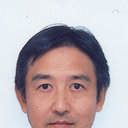Secondary cervical dystonia following stereotactic radiosurgery in a patient with thalamic glioma.
Palavras-chave
Resumo
BACKGROUND
Cervical dystonia associated with structural lesion is uncommon. We report the first patient with secondary CD after stereotactic radiosurgery for thalamic glioma. Possible network abnormalities relevant to manifestation of CD were discussed.
METHODS
A 27-year-old woman complaining of headache and left motor weakness was found to have a thalamic tumor on the right side. The lesion was totally removed using transventricular approach. Histopathologically, tumor samples manifested features of anaplastic astrocytoma. She underwent stereotactic radiosurgery in addition to the conventional radiation and chemotherapy. Afterward, she returned to her usual life without any neurological deficits. Sixteen months postoperatively, the patient developed forced head tilting to the left side combined with chin lift. On the TWSTRS, she registered 15 for torticollis severity. The abnormal head posturing was alleviated by the sensory trick of touching her face with her right hand. Irregular-shaped lesion involving the thalamus, lenticular nuclei, midbrain, pons, and cerebellum was presented on magnetic resonance images. Steroid therapy effectively diminished the lesion size, and her abnormal head posturing was gradually ameliorated (TWSTRS severity scale = 3).
CONCLUSIONS
The clinical-neuroradiological course of the present case strongly suggested that the lesion detected long after the surgery was due to radiation necrosis. The present study may provide a critical information in understanding pathophysiological mechanisms of CD that may involve substantial interactions between olivocerebellar and basal ganglia-thalamocortical circuits.


